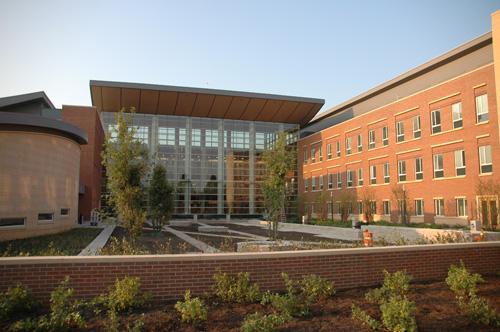New business facility may be most sustainable on campus

The College of Business to receive $5 million to create a new analytics center.
August 28, 2008
When classes started on Monday, Bob Lopez, senior in Business, appreciated the chance to use the new Business Instructional Facility. The $60 million, 160,000 square foot building is also important for the University as well; it is the first “green” building in the University’s history.
Compared to other buildings on campus, such as Wohlers Hall, Lopez said the new building was a vast improvement, even if it was not complete yet.
“It’s so different from any other buildings on campus,” said Barlow LeVold, assistant director of communications for the College of Business.
The facility relies on a unique heating and cooling system and uses natural lighting, which cuts energy costs by half and uses energy more efficiently, saving the University as much as $300,000 per year, LeVold said.
The University paid for the building in part through the Student Clean Energy Fee, which was approved by a student referendum in 2003 and is included as part of the University’s student fees. Various grants and donations from outside sources also funded the construction.
Get The Daily Illini in your inbox!
The air in the building is circulated through convection and gravity, implementing air currents to alter the air temperature in the building. Rising heat in the building’s atrium creates a suction that moves more cold air in and keeps the temperature at comfortable levels, LeVold said.
These same sensors also alter the temperature in individual classrooms based on whether they are occupied, LeVold said.
Architect and University alum Cesar Pelli also designed the building to receive as much natural light as possible. Sensors in the building then adjust the indoor electrical lighting as necessary. The windows in the building are triple-layered, which creates more insulation and prevents heat from entering, LeVold said.
“It’s been built to achieve greenness that goes beyond just buying materials,” LeVold said.
The facility’s roof has solar panels on it that power the building and save electricity. In addition, there are plots of grass on the building that absorb heat and serve another function. During a rainstorm, the grass absorbs the water and purifies it.






